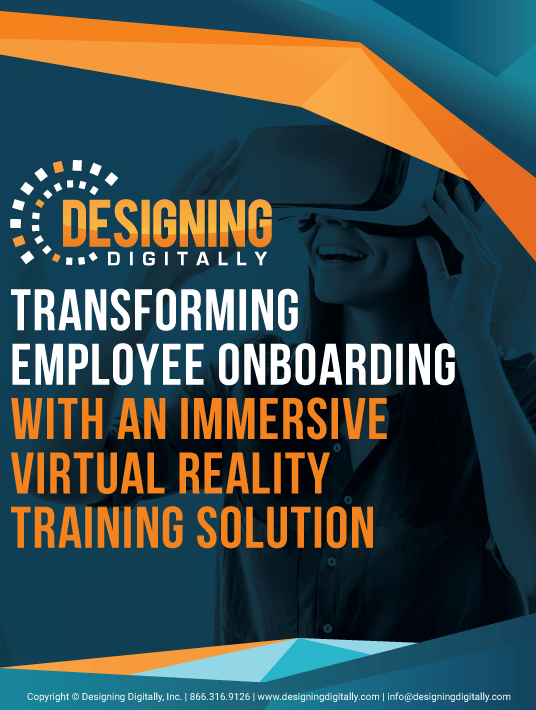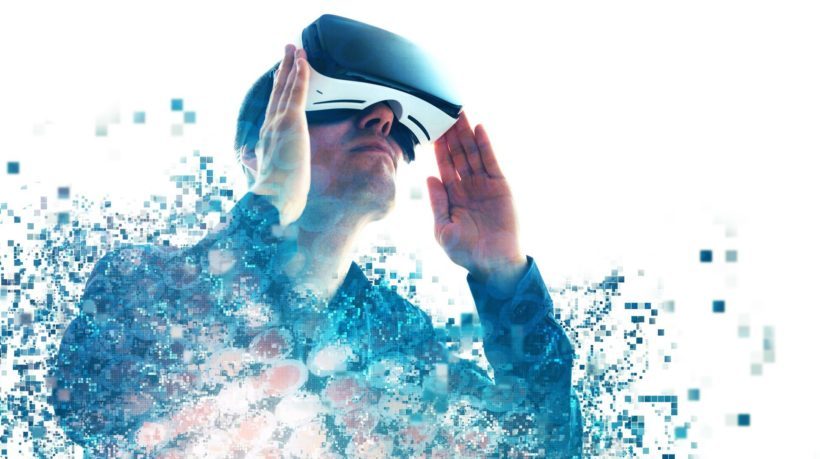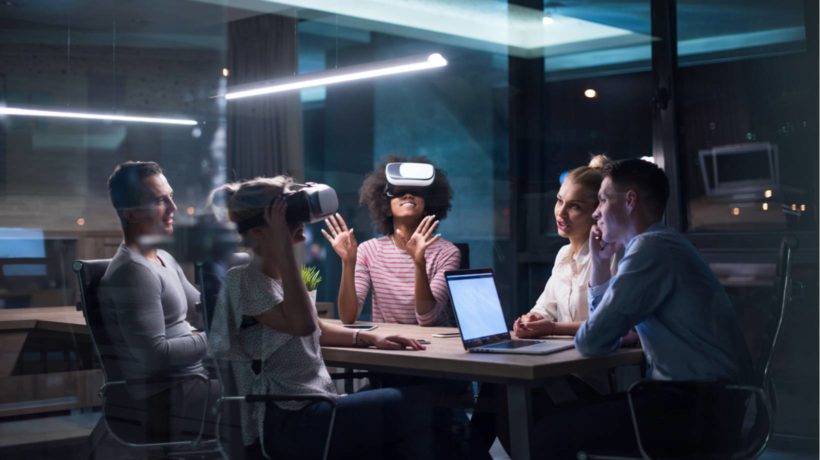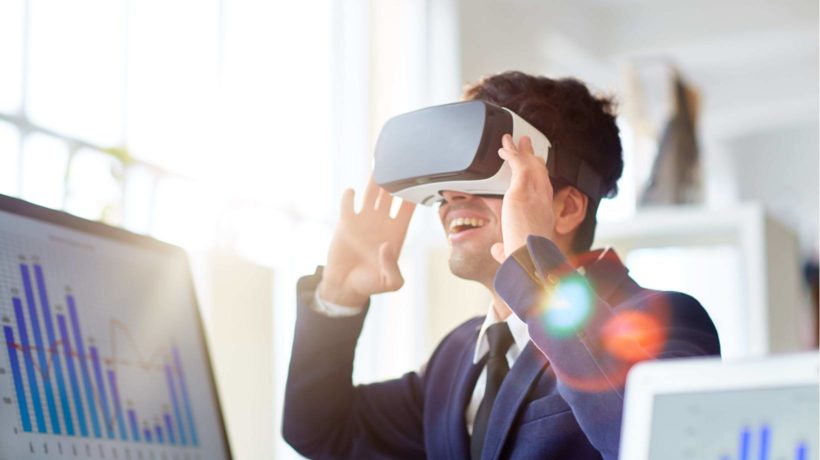Onboarding And A Virtual Reality Training Solution
Companies put a significant amount of time and money into the process of training new employees so they have the knowledge and skills they need to get up and running in their job. The term that defines the method of hiring and enabling new employees as they join an organization is 'onboarding'. The procedures vary per country, organization and work culture. But frequently onboarding includes tasks such as hiring, paperwork, familiarization, and training.

One big communal goal of training programs is that they are designed to create the desired change in behavior. A very specific and clear constant within the company culture. The key to creating that change and building such a behavioral base is providing training in a way that makes a lasting impression. For example, it's every company's initial duty to keep employees safe, but traditional training methods are limited to a theoretical approach when addressing workplace safety. Virtual Reality training allows participants to learn in a virtual work environment and observe simulated realistic consequences when a mistake happens. That's the main reason that aviation and healthcare industries were among the first to adopt VR in training. These are both fields where even routine errors have extreme and severe consequences. Makes sense for them to apply it. Workplace accidents are not confined to these fields, however. Workplace accidents happen in just about every sector of the workforce.
About The eBook: Transforming Employee Onboarding With An Immersive Virtual Reality Training Solution
Which employees don't love a company which is committed to innovation? Everyone does. A company's adoption of VR is an astounding start at displaying this innovation. Millennials, especially, love a company engaged in reforming and discovering technological boundaries. They care less about routine work than Baby Boomers. When a company appropriates VR, they change the perception of how a low-level job is perceived. VR improves employee engagement and satisfaction when it helps them grow quickly and make their jobs easier. As an example. fast-food chain KFC has implemented a VR escape-room training game titled The Hard Way that teaches new employees' chicken-frying basics in 10 minutes. The game proved to be both fun and effective, reducing the time it takes to master the method by over 50%. Overall training via VR makes employees see their job in a more positive light. There is a variety of trends in VR training which will enhance HR and L&D processes for both the company and employees. The eBook Transforming Employee Onboarding With An Immersive Virtual Reality Training Solution elaborates which trends these include:
1. Interviews
VR is revolutionizing the interview process. Placing the right people in the right roles is one of the most important decisions a company makes.
2. Facility Tours
VR provides benefits to not only the company but also the candidates. Companies have begun offering virtual tours of their facilities.
3. Training
VR training is exceptionally suited to tackle Learning and Development needs, particularly for tasks that have dangerous or costly implications to replicate in live training.
4. Onboarding
One of the biggest trends in VR training is employee onboarding. The process of being initiated through orientation and evaluation in a company is called employee onboarding.
Engaging Your Precious Employees With VR
When you involve an employee by very explicitly mentioning the company's goals and culture, you make them feel they matter. You emphasize how important it is for company culture and personal development at the same time. Through simulated employee onboarding are in a more comfortable position to perform their work. When an employee knows why everyone does what they do, they feel as if they know the company better. Simultaneously, this creates a greater sense of purpose, making the new employee feel they belong to a team.
The opportunity of using VR for onboarding allows your new hires to experience training programs and emergency drills without compromising on safety. Think of a railroad company which is responsible for an intercity express train system; the use of VR training can truly help prepare employees for the real thing and train them on the go, at the moment it's required. By offering the possibility for custom training scenarios with VR, you can replicate essential tools, instruments, and machines.
Making Hands-On Training Possible Of Near-impossible Situations
VR is great if you need to provide hands-on training which would be near impossible on the job. Training for high-risk work environments is a hugely important benefit of such training. Interactive 360º options of a VR training during a process of employee onboarding increase safety; allowing you to experience dangerous real-life situations. It speaks for itself that a learner is better prepared for a potential disaster after completion of such a specific VR training.
Contrary to what people might think, it's becoming more and more accessible to implement Virtual Reality training into your employee onboarding. Hardware options are increasing their capabilities and at the same time, it's becoming more affordable. If you decided to compliment onboarding with Virtual Reality, it would a definite way to make a lasting impression on your company. Traditional onboarding processes can make way for a training makeover, where both your company and new employees will benefit. The immersive nature of Virtual Reality training enables newbies and old timers to adapt to their new roles and responsibilities. Employers profit from a heightened level of engagement that an astounding Virtual Reality training solution brings to their employees. Supplying learners with unprecedented insights into their own performance and responsibilities, all while enjoying a decline in training costs.
You Are Virtually About To Make A Lasting Choice
Employee turnover is increasing compared to previous generations; an expensive affair for employees. That expense of time and money is being passed on to employers. If new hires are 69% more likely to stay at a company with a well-structured onboarding program, then you realize that onboarding provides a critical opportunity for employers to create loyal employees.
As with any new development, before a company decides to realize Virtual Reality training for employee onboarding, there are some essential topics to explore and aspects to plan for. There are some major considerations to evaluate before formulating your own Virtual Reality strategy. Download the eBook, Transforming Employee Onboarding With An Immersive Virtual Reality Training Solution, to learn what you should consider before implementation and how to deliver the most effective virtual training. Discover how a solid Virtual Reality training solution can truly help your employee onboarding excel.







